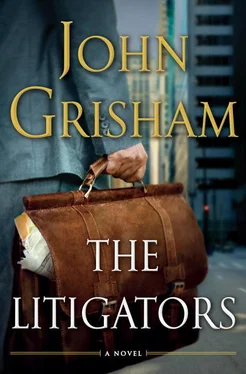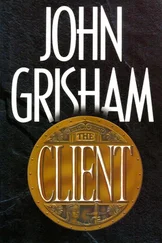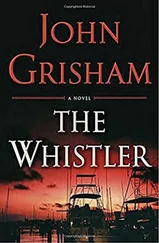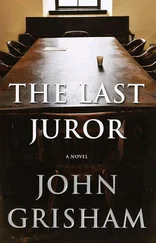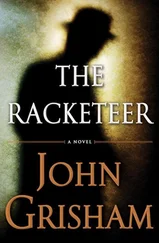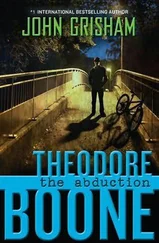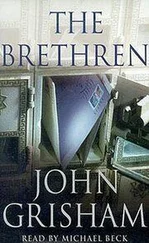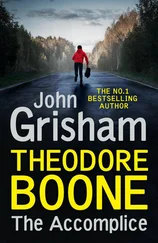“Have you retained experts?” he asked Wally.
“Yes sir.”
“And when do you think you might share this information with the court and with the other side? You are months past due on this, you know?”
“Yes, Your Honor, but we’ve had a few unexpected events in our timeline,” Wally said beautifully, like a real smart-ass.
“Who’s your cardiologist?” Nadine Karros fired from the other side of the table.
“Dr. Igor Borzov,” Wally shot back confidently, as if Borzov were known as the greatest heart expert in the world. Nadine did not flinch, nor did she smile.
“When can he be here for a deposition?” the judge asked.
“Whenever,” Wally said. No problem. The truth was that Borzov was having a difficult time making a decision about walking into a buzz saw, even for $75,000.
“We won’t be deposing Dr. Borzov,” Ms. Karros said, quite dismissively. In other words, I know he’s a quack, don’t care what he says in a depo, because I will annihilate him in front of the jury. She made this decision on the spot, with no need to confer with her minions or ponder things for twenty-four hours. Her iciness was indeed chilling.
“Do you have a pharmacologist?” she asked.
“We do,” Wally lied. “Dr. Herbert Threadgill.” Wally had actually spoken to this guy, but no agreement had been reached. David got his name from his pal Worley at Zell & Potter, who described Threadgill as “a nut job who’ll say anything for a buck.” But it was proving not to be that easy. Threadgill was asking for $50,000 to compensate for some of the humiliation he would undoubtedly face in open court.
“We don’t need his deposition either,” she said, with a slight flip of the hand that conveyed a thousand words. He’ll be dog meat too.
When the meeting ended, David insisted that Oscar and Wally follow him to a courtroom on the fourteenth floor of the Dirksen building. According to the federal court’s Web site, an important trial was getting started. It was a civil case involving the death of a seventeen-year-old high school senior who’d been killed instantly when a tractor-trailer rig blew through a red light and hit the kid broadside. The rig was owned by an out-of-state company, thus the federal jurisdiction.
Since no one at Finley & Figg had ever tried a case in federal court, David felt strongly that they should at least watch one.
Five days before the trial, Judge Seawright reconvened the lawyers in his courtroom for the final pretrial conference. The three stooges looked remarkably put together and professional, thanks to David’s efforts. He had insisted they wear dark suits, white shirts, ties that were anything but flashy, and black shoes. For Oscar, this had not been a serious problem since he had always dressed the part of a lawyer, albeit one from the streets. For David, it was second nature because he had a closet full of expensive suits from his days at Rogan Rothberg. For Wally, though, it had been more of a challenge. David found a men’s store with moderately priced clothing, and he had actually gone with Wally to make selections and supervise the fitting. Wally had bitched and bickered throughout the ordeal, and he nearly bolted when the final tally came to $1,400. Eventually, he put it on a credit card, and he and David both held their breath when the clerk processed it. The charges cleared, and they hurried away with bags of shirts, ties, and one pair of black wing tips.
On the other side of the courtroom, Nadine Karros, in Prada, was surrounded by half a dozen of her attack dogs, all spiffed up in Zegna and Armani suits and looking like ads from glossy magazines.
As was his custom, Judge Seawright had not released the list of prospective jurors. The other judges released their lists weeks before trial, and this invariably set in motion a frenzied investigation by highly paid jury consultants for both sides. The bigger the case, the more money was spent probing into the backgrounds of the jury pool. Judge Seawright detested these shadowy maneuverings. Years earlier, in one of his cases, there had been allegations of improper contact by investigators. Prospective jurors had complained of being watched, followed, photographed, and even approached by smooth-talking strangers who knew too much about them.
Judge Seawright called the meeting to order, and his clerk handed one list to Oscar and another to Nadine Karros. There were sixty names, all of which had been prescreened by the judge’s staff to eliminate any juror who (1) was taking or had ever taken Krayoxx or any other cholesterol medication; (2) had a family member, relative, or friend who was taking or had ever taken Krayoxx; (3) had ever been represented by a lawyer remotely connected to the case; (4) had ever been involved in a lawsuit involving a drug or product alleged to be defective; (5) had read a newspaper or magazine article about Krayoxx and the litigation surrounding it. The four-page questionnaire went on to cover other areas that might disqualify a prospective juror.
In the next five days, Rogan Rothberg would spend $500,000 delving into the backgrounds of the jury pool. Once the trial started, they would have three highly paid consultants scattered around the courtroom observing the jury as it reacted to the testimony. Finley & Figg’s consultant cost $25,000 and was brought on board only after another firm fight. She and her associates would do their best to check backgrounds and profile the model juror, and she would observe the selection process. Her name was Consuelo, and she quickly realized that she had never worked with such inexperienced attorneys.
It had been determined, through an unpleasant and often testy process, that Oscar would take the role of lead counsel and do most of the footwork in the courtroom. Wally would observe, offer advice, take notes, and do whatever the second-in-command was supposed to do, though none of them were certain what this would entail. David would be in charge of the research, a monumental task since this was the first federal trial for all three and everything had to be researched. Through the course of numerous arduous strategy sessions around the table, David had learned that Oscar’s last jury trial had been in state court eight years earlier, a relatively simple who-ran-the-red-light car accident that he had lost. Wally’s record was even more modest — a slip-and-fall case against a Walmart in which the jury deliberated fifteen minutes before finding for the store, and an almost forgotten car wreck up in Wilmette that had also ended badly.
When Oscar and Wally locked horns over strategy, they had turned to David because he was the only one there. His votes had been crucial, a fact that disturbed him greatly.
After the lists were handed over, Judge Seawright delivered a stern lecture about getting close to the jury pool. He explained that when the prospective jurors arrived Monday morning, he would grill them on the subject of improper contact. Did they feel as if someone had been prying into their lives, their backgrounds? Had they been followed, photographed? Any violations, and he would be a very unhappy judge.
Moving on, he said, “No Daubert challenges have been filed, so it’s safe to say that neither side wishes to challenge the other’s experts, am I correct?”
Neither Oscar nor Wally was aware of the Daubert rule, which had been around for years. Daubert allowed each side to challenge the admissibility of the other’s expert testimony. It was standard procedure in federal cases and was followed in about half of the states. David had stumbled across it ten days earlier when he was watching a trial down the hall. After some quick research, he realized that Nadine Karros could probably exclude their experts before the trial even started. The fact that she had not requested a Daubert hearing meant only one thing — she wanted their experts on the stand so she could castigate them before the jury.
Читать дальше
